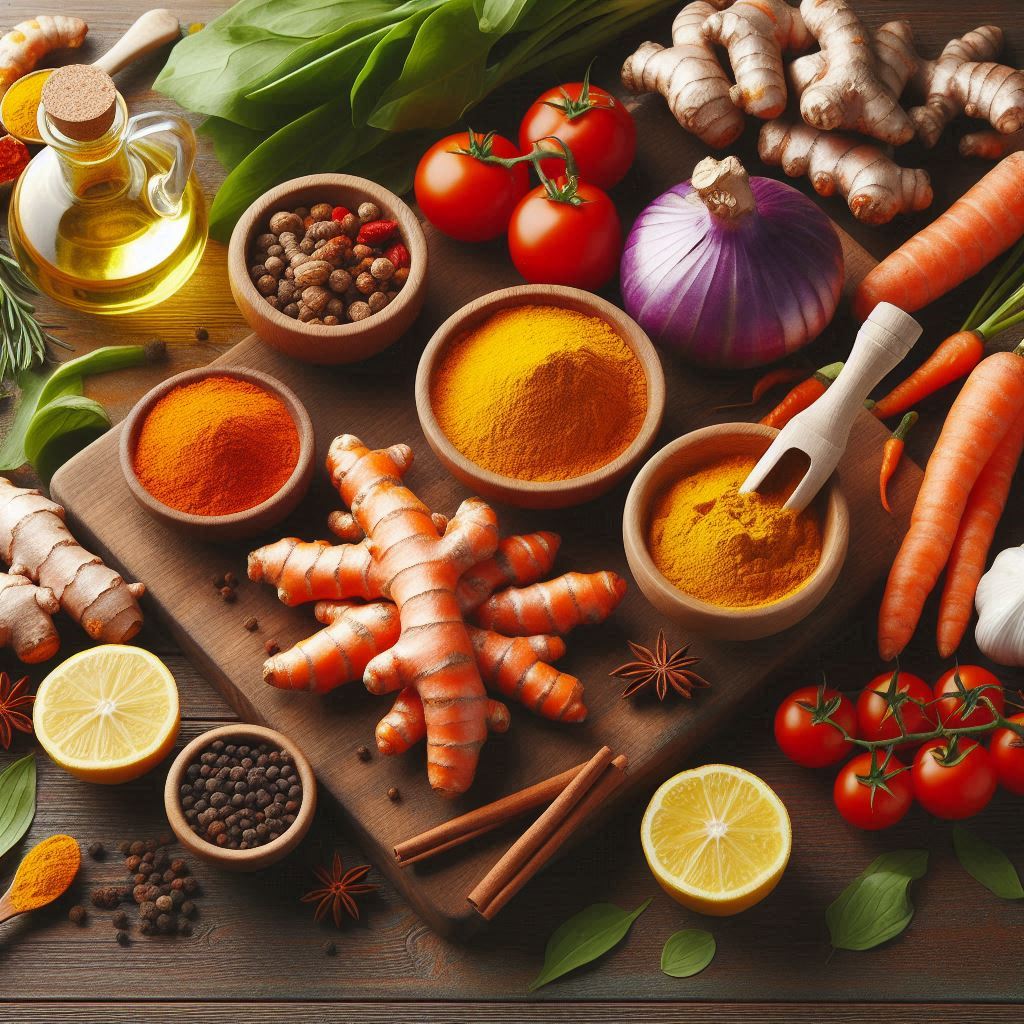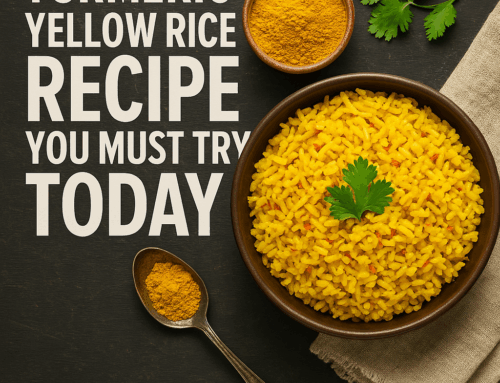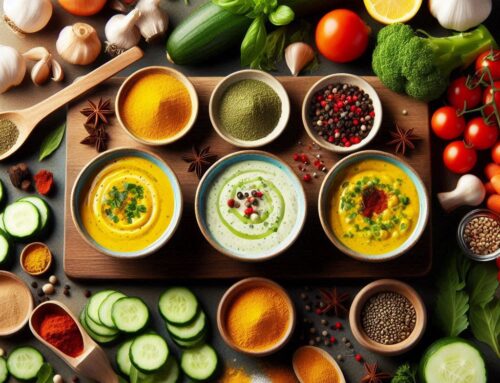
Fresh turmeric is a golden gem that’s been cherished for centuries, not just for its vibrant hue but for its unique flavor and remarkable health benefits. If you’ve ever wondered how to use fresh turmeric in cooking, you’re in the right place. This beginner’s guide is designed to take you step-by-step through everything you need to know—from selecting the perfect root to transforming it into delicious dishes. Whether you’re a curious home cook or someone looking to spice up your meals with a healthy twist, this article will equip you with the knowledge and confidence to start cooking with fresh turmeric. Let’s dive into the world of this versatile root and unlock its culinary potential!
1. Understanding Fresh Turmeric
Before we explore how to use fresh turmeric in cooking, let’s get to know this ingredient. Fresh turmeric is the root of the Curcuma longa plant, a close cousin to ginger, and it’s been a staple in Southeast Asian and Indian cuisines for thousands of years. Unlike the powdered turmeric you might sprinkle from a spice jar, fresh turmeric brings a milder, earthier flavor and a vivid color that can elevate any dish.
What Makes Fresh Turmeric Special?
Picture this: you slice into a small, knobby root, and out bursts a brilliant orange-yellow flesh that looks like a sunrise captured in food form. That’s fresh turmeric. It’s typically smaller than ginger, with a thin, brownish skin that peels away easily. Its scent is subtle yet warm, with hints of ginger and citrus, and its taste is less pungent than the powdered version, offering a gentle bitterness balanced by an earthy depth.
So, how does it differ from the turmeric powder you’re used to? Powdered turmeric is made by drying and grinding the root, which concentrates its flavor and makes it more intense. Fresh turmeric, on the other hand, has a brighter, more nuanced taste and a slight crunch when used raw. It’s perfect for dishes where you want a delicate turmeric presence without overwhelming the other flavors.
Picking the Best Fresh Turmeric
When you’re at the store—be it a grocery, health food shop, or Asian market—knowing how to choose fresh turmeric is key. Here’s what to look for:
- Firmness: Give the root a gentle squeeze. It should feel solid, not soft or spongy.
- Smooth Skin: Avoid roots with wrinkles, mold, or dark spots. The skin should be taut and unblemished.
- Color Check: If you can peek at the flesh (say, from a broken piece), it should be a rich, golden hue.
Storing Fresh Turmeric Like a Pro
Once you’ve got your turmeric, proper storage keeps it fresh and ready for your culinary adventures:
- In the Fridge: Wrap the roots in a paper towel to absorb moisture, then pop them into a resealable bag. They’ll stay good for about two weeks in the crisper drawer.
- In the Freezer: For longer storage, peel and grate the turmeric, then freeze it in small portions using an ice cube tray. Alternatively, freeze whole roots and grate them straight from frozen when needed.
- DIY Powder: Got extra? Slice it thin, dry it in a low oven or dehydrator, and grind it into your own fresh turmeric powder.
With a solid grasp of what fresh turmeric is and how to keep it fresh, you’re ready to move on to the next step: preparing it for your dishes.
2. Preparing Fresh Turmeric
Learning how to use fresh turmeric in cooking starts with preparation. Unlike its powdered form, which you can simply shake into a dish, fresh turmeric needs a little hands-on love to unlock its flavor and color. Don’t worry—it’s straightforward, and with a few tips, you’ll be prepping like a pro.
Gather Your Tools
You don’t need fancy equipment, just a few basics:
- A sharp knife for slicing or chopping
- A vegetable peeler or spoon for peeling
- A grater or microplane for fine textures
- Gloves (optional but highly recommended—turmeric stains like nobody’s business!)
Peeling Made Easy
Fresh turmeric’s skin is thin and papery, so peeling is a breeze. Here are two simple methods:
- With a Peeler: Run a vegetable peeler along the root, just like you would with a carrot. It’s quick and efficient.
- With a Spoon: No peeler? No problem. Use the edge of a spoon to scrape off the skin. This trick, borrowed from ginger prep, reduces waste and works surprisingly well.
Stain Alert: Turmeric’s golden color is gorgeous in food but less so on your hands. Wear gloves if you can, or be prepared to scrub with lemon juice or baking soda if your fingers turn yellow.
Cutting, Grating, or Chopping
How you prep fresh turmeric depends on what you’re cooking:
- Grating: For a fine, paste-like texture, use a microplane or the small holes of a box grater. This is perfect for blending into smoothies, sauces, or dressings.
- Slicing: Cut thin rounds (about 1/8 inch thick) for soups, stir-fries, or teas. It’s a great way to infuse flavor without overpowering the dish.
- Chopping: Dice it into small cubes for a chunkier texture in curries, stews, or roasted dishes.
If your recipe involves blending—like a creamy soup or sauce—you can skip the fine chopping and leave it in bigger pieces to process later.
Managing the Mess
Turmeric’s vibrant hue can leave its mark on your kitchen. Here’s how to keep things tidy:
- Use Non-Porous Surfaces: Opt for a glass or metal cutting board—plastic ones stain more easily.
- Clean Up Fast: Wipe spills off countertops with soap and water ASAP to avoid permanent marks.
- Wash Tools Right Away: Rinse your knife, grater, and peeler immediately after use to prevent staining.
With your turmeric prepped and your kitchen still spotless, you’re all set to start cooking. Let’s explore how to bring this root to life in your meals.
3. Cooking with Fresh Turmeric
Now comes the fun part: discovering how to use fresh turmeric in cooking. This root is incredibly versatile, lending its golden glow and subtle flavor to everything from savory curries to sweet smoothies. Whether you’re sautéing, boiling, or using it raw, fresh turmeric adapts to a variety of techniques.
Top Cooking Methods
Here’s how to incorporate fresh turmeric into your dishes:
Sautéing for Flavor
Sautéing fresh turmeric with other ingredients builds a rich, aromatic base.
- How It Works: Heat a tablespoon of oil (coconut or olive works great) in a pan. Add grated or sliced turmeric and cook for 1-2 minutes until it releases its warm scent. Toss in onions, garlic, or ginger next.
- Perfect For: Curries, stir-fries, or sautéed veggies.
Boiling for Infusion
Boiling lets fresh turmeric infuse liquids with its earthy goodness.
- How It Works: Add sliced or chopped turmeric to water, broth, or milk. Simmer for 10-15 minutes to extract its flavor and color.
- Perfect For: Soups, stews, or a soothing turmeric tea.
Raw for a Fresh Kick
Using fresh turmeric raw preserves its peppery bite and vibrant hue.
- How It Works: Grate or finely chop it and stir it into your dish—no cooking required.
- Perfect For: Smoothies, salad dressings, or marinades.
Roasting for Depth
Roasting enhances turmeric’s earthiness and adds a golden touch to your plate.
- How It Works: Toss sliced turmeric with veggies or protein, drizzle with oil, and roast at 400°F (200°C) for 20-30 minutes.
- Perfect For: Roasted root vegetables, chicken, or tofu.
Cooking Tips to Shine
- Start Small: Fresh turmeric is stronger than powdered, so begin with a 1-inch piece per dish and adjust to your taste.
- Pair with Fat: Turmeric’s star compound, curcumin, absorbs better with fats like ghee, coconut milk, or olive oil.
- Boost with Pepper: A pinch of black pepper increases curcumin’s bioavailability, making it more effective in your body.
These methods open up a world of possibilities. Next, let’s talk about what flavors play nicely with fresh turmeric and try some easy recipes.
4. Flavor Pairings and Recipe Ideas
Part of mastering how to use fresh turmeric in cooking is knowing how to pair it with other ingredients. Its warm, slightly bitter profile complements a wide range of flavors, making it a team player in the kitchen. Let’s explore some winning combinations and whip up a few beginner-friendly recipes.
Flavors That Love Fresh Turmeric
Here’s a lineup of ingredients that enhance turmeric’s magic:
- Spices: Ginger, garlic, cumin, coriander, and black pepper amplify its warmth.
- Herbs: Fresh cilantro, parsley, or mint add a bright contrast.
- Veggies: Carrots, sweet potatoes, and cauliflower soak up its golden glow.
- Proteins: Chicken, fish, tofu, and lentils balance its earthiness.
- Fruits: Lemon, orange, or mango bring a zesty lift.
- Fats: Coconut milk, olive oil, and ghee make it creamy and rich.
Simple Recipes to Get You Started
Ready to cook? Here are three easy fresh turmeric recipes to try:
Golden Turmeric Latte
A cozy, anti-inflammatory drink to warm your soul.
Ingredients:
- 1 cup milk (dairy, almond, or oat)
- 1 inch fresh turmeric, grated
- 1/2 inch fresh ginger, grated
- 1 tablespoon honey or maple syrup
- Pinch of black pepper
Instructions:
- Warm the milk in a saucepan over medium heat.
- Stir in the turmeric, ginger, and black pepper.
- Simmer for 5 minutes, stirring now and then.
- Strain into a mug, sweeten with honey, and enjoy.
Turmeric Veggie Stir-Fry
A quick, colorful dish bursting with flavor.
Ingredients:
- 1 tablespoon coconut oil
- 1 inch fresh turmeric, grated
- 1 inch fresh ginger, grated
- 1 red bell pepper, sliced
- 1 cup broccoli florets
- 1 carrot, thinly sliced
- 2 tablespoons soy sauce
- Cooked rice or noodles
Instructions:
- Heat the oil in a large skillet over medium heat.
- Add turmeric and ginger, sautéing for 1 minute.
- Toss in the veggies and stir-fry for 5-7 minutes until crisp-tender.
- Add soy sauce, stir, and serve over rice or noodles.
Turmeric Citrus Dressing
A zingy dressing to brighten any salad.
Ingredients:
- 1/4 cup olive oil
- 2 tablespoons fresh lemon juice
- 1 inch fresh turmeric, grated
- 1 teaspoon honey
- Salt and pepper to taste
Instructions:
- Whisk all ingredients in a small bowl until smooth.
- Drizzle over greens or roasted veggies and toss.
These recipes are just a launchpad. Try adding fresh turmeric to your morning oatmeal, blending it into a mango smoothie, or stirring it into a lentil soup—the possibilities are endless!
5. Health Benefits and Considerations
While we’ve focused on how to use fresh turmeric in cooking, it’s hard to ignore the health perks that come with it. This root isn’t just a pretty face—it’s packed with compounds like curcumin, which science loves for its anti-inflammatory and antioxidant powers.
Why Fresh Turmeric Is Good for You
- Fights Inflammation: Curcumin may ease chronic inflammation, helping with joint pain or post-workout soreness.
- Antioxidant Boost: It neutralizes free radicals, protecting your cells and supporting overall wellness.
- Aids Digestion: Turmeric can stimulate bile production, easing bloating and improving gut health.
- Supports Immunity: Its antimicrobial properties may help ward off bugs and keep your immune system strong.
Things to Watch Out For
Fresh turmeric is safe for most, but here are a few pointers:
- Staining: It’s a pro at coloring food—and your hands, clothes, or counters. Handle with care and clean up quickly.
- Allergies: Rare, but possible. Stop using it if you notice itching or swelling, and see a doctor if needed.
- Medication Caution: Turmeric might interact with blood thinners or diabetes meds. Check with your healthcare provider if you’re on prescriptions.
- Moderation: A little goes a long way. Stick to culinary amounts (1-2 inches per dish) unless advised otherwise.
With these benefits and precautions in mind, you can enjoy fresh turmeric’s goodness safely and deliciously.
Conclusion: Your Turmeric Journey Begins Now
Fresh turmeric is more than just a spice—it’s a vibrant, flavorful way to enhance your cooking and your health. In this beginner’s guide, we’ve walked through how to use fresh turmeric in cooking, from understanding its unique qualities to preparing it, cooking with it, pairing it with flavors, and appreciating its benefits. Whether you’re sautéing it into a curry, blending it into a smoothie, or sipping it in a latte, this golden root brings something special to the table.
So, what’s your next step? Grab some fresh turmeric from your local market and start small—maybe with one of the recipes above or a dash in a dish you already love. As you get the hang of it, let your creativity run wild. We’d love to hear how it goes—drop your turmeric triumphs (or questions!) in the comments below and join the golden cooking revolution!






